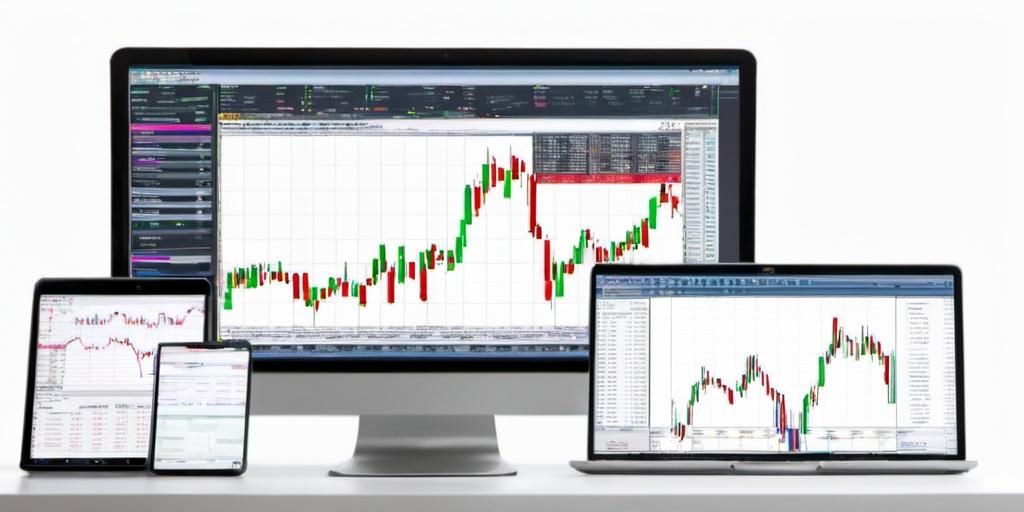How to Create Your Own Software
YukonSoft >> How to Create Your Own SoftwareLearn more about How to Create Your Own Software

Getting Started with Trading Software
So, you’ve got the itch to create your own trading software—kudos to you. It’s like concocting your secret sauce for success in the wild ride that is finance. But before you dive headfirst into this endeavor, there are a few critical steps and concepts to wrap your head around.
First things first, understand what you actually need from your trading software. Whether it’s automating trades, analyzing market data, or managing portfolios, clarity on your objectives will save you a boatload of time and resources. Know your audience too; are you catering to the seasoned traders or the fresh-faced newbies?
Planning and Research
No need to reinvent the wheel here. Look at what’s already out there. Platforms like MetaTrader, NinjaTrader, or Tradestation have been in the game for a while and have features that have proven their worth. Analyze these platforms, take note of what they do well, and where they stumble. This reconnaissance can help you dodge pitfalls and carve a niche.
Once you’ve got your ideas and research sorted, translate them into requirements. Think of this as creating a shopping list but for software features. It’s about nailing down the must-haves and the nice-to-haves.
Choosing the Right Technology Stack
The tech stack for your software isn’t just a list of buzzwords to impress your tech-savvy friends. It’s the heart and soul of your project. Popular programming languages for trading software include Python, known for its simplicity, and C++, famous for its speed and efficiency. If you’re gunning for web-based software, JavaScript and frameworks like React or Angular could be your best friends.
Remember, the tech stack should align with your goals. Real-time data processing? C++ might be the way to go. User-friendly UI? Consider JavaScript frameworks. Don’t forget the databases for storing your data—SQL or NoSQL, each has its pros and cons.
Development Process: Code with Precision
You’ve got your plan. You’ve chosen your tools. Now it’s time to code. It’s like assembling a LEGO set, where you have to get the pieces to fit just right. Start with a small prototype or a proof of concept. This isn’t just for show; it helps you test the waters and adjust your direction based on initial feedback.
Continuous integration and deployment (CI/CD) should be in your vocabulary by now. Use version control systems like Git to track changes and collaborate effectively if you’re working in a team. Testing isn’t a luxury, it’s a necessity. From unit tests to integration tests, they’re all vital to ensure your software doesn’t crash and burn.
User Interface Matters
Even the most powerful trading software can be a flop if the interface looks like it time-traveled here from 1995. Your users should feel like they’re handling a sleek sports car, not a rusty old bicycle. Keep it simple, intuitive, and make sure your UI has all the necessary tools but without cluttering the screen. A clean design with easy navigation can elevate user satisfaction.
Regulatory Compliance
There’s no escaping the long arm of the law. Trading software operates in a highly regulated space. Ensure compliance with regulations like the SEC in the US, or ESMA in Europe, depending on where you’re launching. Ignoring regulations is akin to wearing a “sue me” sign.
Deployment and Maintenance
Once your software is polished and ready to hit the market, deployment is the next course of action. Whether it’s cloud-based or an on-prem solution, stability should be your focus. And remember, post-launch isn’t a time to rest on your laurels. Continuous updates, user feedback incorporation, and bug fixes are your mantra now. Think of it as nurturing a plant—water it regularly and it will grow healthy.
Marketing and Community Building
Building software is only half the battle; the other half is getting the word out. Utilize content marketing, social media, and forums like Reddit or trading communities to spread the buzz. Workshops, webinars, and free trials can be effective.
Creating a supportive community around your product can help immensely. Community interaction leads to valuable feedback, feature requests, and can even become your brand advocates.
Conclusion
Creating trading software is no walk in the park, but with the right mix of planning, tech know-how, and market understanding, it’s definitely achievable. Think of it as an investment—effort now for potential rewards later. And while it can be a bumpy ride, reaching the finish line can be rewarding, not just in terms of financial gain, but also in the satisfaction of seeing your creation come to life.